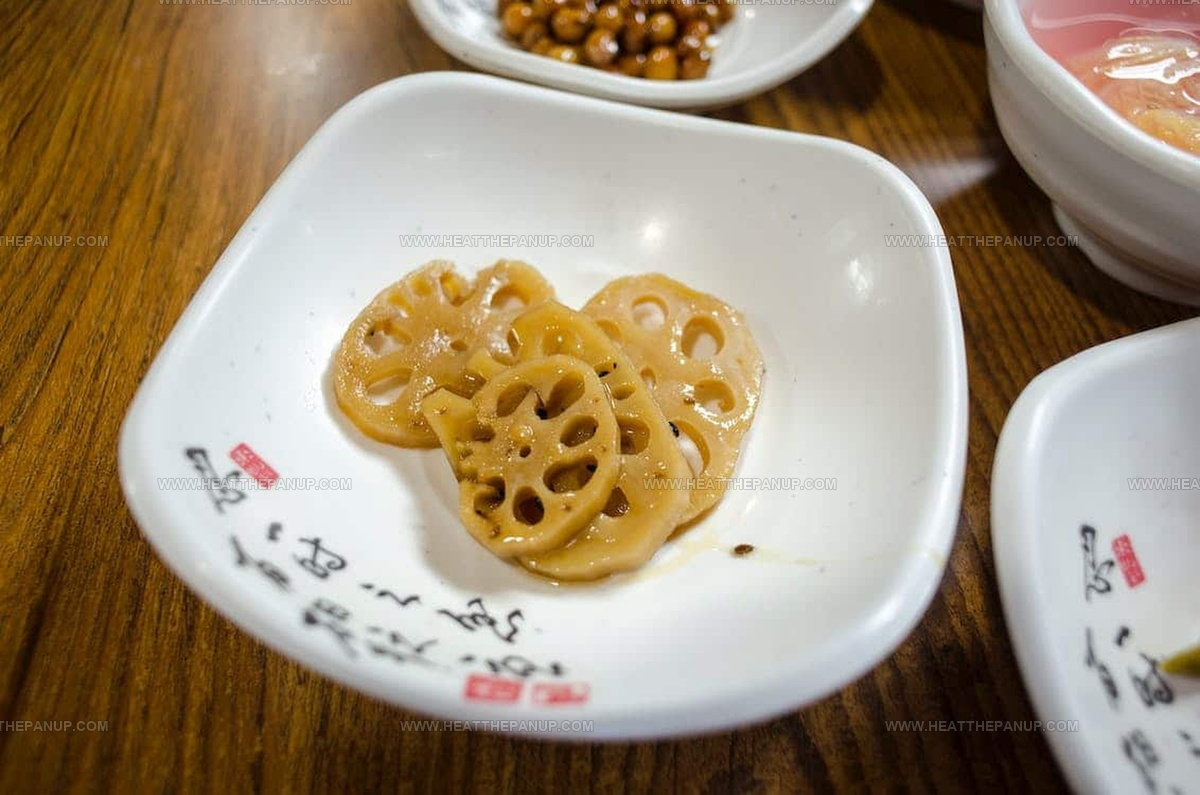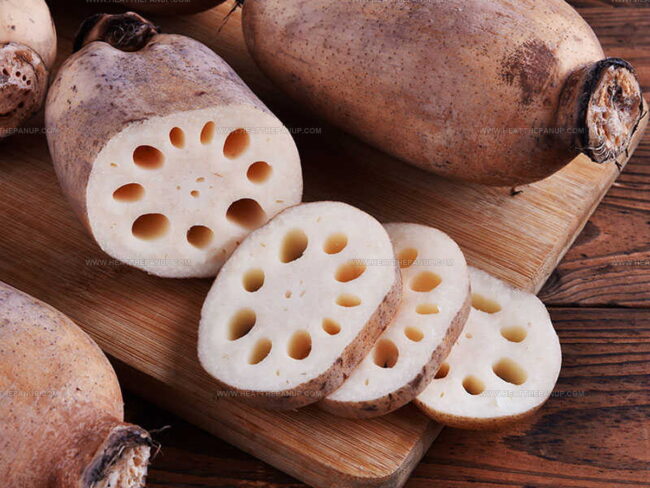What Does Lotus Root Taste Like? A Crunchy Veggie Mystery Solved
Lotus root, a unique vegetable with an intriguing appearance, often sparks curiosity among food enthusiasts and curious cooks.
This remarkable ingredient carries a rich cultural significance across many Asian cuisines, particularly in China and Japan.
Nutritionists praise its impressive health benefits and versatile culinary applications.
Its distinctive texture and appearance make it stand out in various dishes, from stir-fries to salads.
Some people find its visual appeal almost as captivating as its potential flavor profile.
The vegetable's honeycomb-like structure creates an immediate visual interest that draws you closer to understanding its gastronomic potential.
Understanding the nuanced taste of lotus root can transform your approach to cooking and expand your culinary horizons.
Are you ready to unravel the delicious mystery behind this fascinating ingredient?
What Is Lotus Root?
Lotus root, called Kamal Kakdi in Hindi, shows up in many Indian and Asian dishes. Water plants produce this special vegetable underground.
Roots grow super long in pond and river soils, spreading out like connected sausage pieces.
Tough outer skin covers white inside meat that feels similar to raw potatoes.
People can find lotus root in different forms - fresh packages, cans, dried versions, candied pieces, and frozen slices. Good roots should feel heavy and strong with no mushy or damaged spots.
Flavor of Lotus Root
Lotus root offers a gentle taste without bitterness.
People enjoy its light flavor and crisp texture similar to celery.
When prepared, it keeps a nice tender quality but works best when fresh.
You can detect a soft sweetness with subtle nutty hints throughout its texture.
Lotus root delivers a more pleasant flavor compared to artichokes.
Different from many other vegetables, this root stays crispy even after cooking, which makes it perfect for quick pan cooking.
Is Lotus Root Healthy?
Benefits of Kamal Kakdi:
Nutrients absorb better through increased gastric juice release. Intestinal muscle movements become smoother, helping create easier bowel experiences.
Side Effects and Allergies of Lotus Root
People should know lotus root isn't a substitute for doctor-prescribed treatments.
Speaking with healthcare professionals matters before using lotus root for health concerns.
Lotus stem contains lots of fiber, so people need to slowly add it to their diet.
Small amounts help your body get used to this new food without causing stomach problems.
Lotus stems grow in muddy water, which makes cleaning them tricky.
Eating raw lotus stems could lead to parasites, so careful washing and cooking matters a lot.
Pregnant women need to be extra careful and should avoid raw lotus stems completely.
Safety always comes first when considering new foods during pregnancy.
Can Purple Lotus Root Be Eaten?
Lotus root's purple color comes from a normal chemical reaction.
These roots have lots of special compounds that change when they touch air.
When you cook lotus root in an iron pot, something interesting happens with those compounds.
Chemical changes mix with iron and create a purple or blue liquid.
Boiling for a while or letting the root sit causes this blue mix to turn black.
People often worry about this color change, but it doesn't harm the food at all.
This color shift is just a natural process that happens with some plant foods.
Chefs and home cooks see this purple reaction and know it's completely safe to eat.
Science explains why lotus roots change color, but the taste and nutrition stay exactly the same.
Can You Eat Green Lotus Root?
Lotus roots should not be eaten when they look green.
Normal lotus roots have light yellow or white flesh after cutting.
Green lotus roots do not look typical.
Lotus roots pack lots of good stuff like protein, vitamins, and minerals.
Bad storage can lead to problems with nutrients and cause mildew growth.
Green mold grows easily in many places.
These molds spread fast once they settle on lotus roots, making them turn green.
People should not eat green lotus roots.
Someone who buys a green lotus root needs to throw it away and purchase a fresh one quickly.
Best Time to Eat Lotus Root
Lotus roots make a tasty treat during any month, but autumn and winter bring out their most delicious qualities.
People enjoy this special vegetable all year long, with peak flavor arriving when cool weather settles in.
Shoppers find these veggie slices particularly wonderful during chilly seasons, when their natural sweetness reaches maximum levels.
Fans of this delicate ingredient know that cold months showcase lotus roots at their absolute best, offering maximum taste and texture for hungry diners.
How to Store Lotus Root
Lotus root needs careful handling to stay fresh.
Wrapping an unwashed lotus root in a damp cloth helps it last one to two weeks in the refrigerator.
People who have already peeled and sliced lotus root should store it in a sealed container and use it quickly.
Water mixed with a splash of vinegar or lemon juice works well to protect cut lotus root.
Soaking sliced pieces in this acidulated water stops them from turning brown and removes any sharp taste.
Shoppers should look for whole, uncut lotus roots when buying.
Whole lotus roots can stay good in the refrigerator for two weeks, while cut pieces should be eaten within one week for best quality and taste.
Cooking With Lotus Root
You can cook this on medium heat for three to four minutes by stir-frying.
Another option includes boiling and serving with mixed greens and soy sauce.
Rice works well as a base for serving.
Steamed lotus root serves as a good choice when unsure about preparation.
Vegetable cooking remains the most typical method.
Lotus roots mix well with different spices.
Families in India prepare these as chips, curries, koftas, and even pickles.
People in Japan value lotus roots for health benefits.
Chefs often slice lotus roots to add as a garnish in soups, stews, or salads that make meals more interesting.
Powdered versions help increase nutrition in regular dishes.
Lotus roots carry a slightly nutty taste.
Everyone who tries them typically enjoys their unique flavor!




James Hambly
Founder & Recipe Creator
Expertise
Recipe Development, Culinary Education, Farm-to-Table Cooking, Southern Cuisine
Education
Asheville-Buncombe Technical Community College
Certificate in Culinary Arts
Focus: Hands-on training in professional cooking techniques, emphasizing farm-to-table practices and Southern cuisine.
The Chef’s Academy
Associate Degree in Culinary Arts
Focus: Comprehensive culinary education covering global cuisines, kitchen management, and food safety.
James grew up surrounded by the smells of cast-iron skillets and slow-cooked Southern meals in Asheville, North Carolina.
He sharpened his skills with a Certificate in Culinary Arts from Asheville-Buncombe Technical Community College, and later leveled up with an Associate Degree from The Chef’s Academy.
James’s philosophy is simple: the best meals don’t need fancy tricks, just fresh ingredients, a hot pan, and a little bit of heart. His favorite days are spent testing one-pan wonders, chasing bold flavors, and creating recipes that feel easy, even on a busy night.